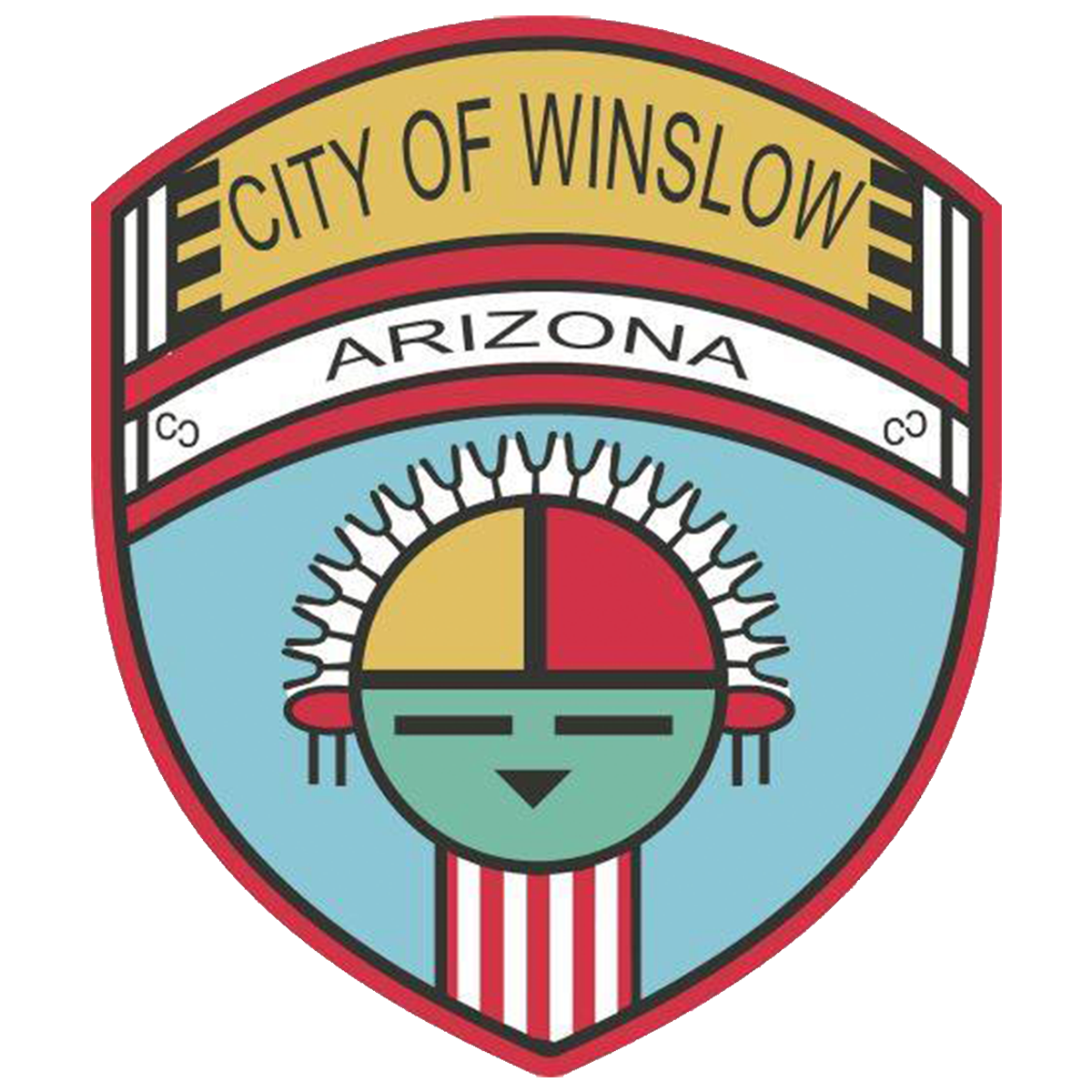Birthplace Cabin
A Gift from Mr. and Mrs. Cecil McCormick
The Birthplace Cabin is believed to be one of the first two cabins built in the Winslow community. This cabin sat as the center of Williamson Avenue and Third Street for over a half of a century, then moved behind the Valentine Dinner next to the (now the Bank of the West parking lot between) between Third Street and Fourth Street on Williamson Avenue. The structure is believed to have been constructed in the mid to late 1860’s possible as late as 1873, and maybe the second oldest log cabin in Arizona, being in three Arizona counties without ever being moved. The oldest log cabin is the former Arizona Territorial Governor’s Mansion-Sharlot Hall Museum in Prescott.
The Winslow Birthplace Cabin is of Finnish design, the walls are Butt and Pass construction, roof is a combination of Purlin and Rafter construction with wooden shake mixed with metal can bases tile. The interior was grouted with earthen plaster and covered with cardboard to keep out the elements. The interior still has one of the Babbitt Mercantile Snowdrift lard boxes nailed to the wall.
The cabin marked one of a few scarce homesteads in the Middle Little Colorado River Valley before the arrival of the Atlantic Pacific Railroad. When the early settlers of the early Church of Jesus Christ of Latter-day Saints came to the area to establish the Little Colorado River Settlements (5) in 1876-1880 there were folks in the area homesteading the land along the proposed railroad route starting in mid to late 1862. The first National Homestead Act, passed on May 20, 1862, entitled heads of households or persons at least 21 years of age to file for 160 acres otherwise sold by the government at $1.25 per acre, or for 80 acres otherwise sold by the government at $2.50 per acre. The more expensive land was that which lay within the limits of the railroad grants. In the Arizona-New Mexico Territory the grants extended 40 miles to either side of the trackage. Aside from the nominal filing fees, homestead land was free to those who fulfilled the residency and improvement requirements of the law. Arizona was one of only 31 states or territories to ever have homesteading. There were no homesteads in New England, virtually none east of the Mississippi River and very few in the first tier of states west of the river.
The cabin was possibly constructed by George Cresswell a local hunter, trapper and trader, used as his home, then later by Winslow Prospector Franklin (Frank) Harvey French in 1887. He and his wife Emma Batchelor Lee French called the cabin home while building their dairy ranch in what is now Bushman Acres. (Emma was Inducted to the Arizona Woman’s Hall of Fame 2019. Her info is attached below. ) in 1913-1917, Fred Hayes Jr and Sam Hayes operated a saddlery and cobbler shop operated as the “Sam Hayes Shoe Shop” in the cabin. Cecil McCormick while working for the Sheriff’s office, used the cabin as a jail when needed from 1944-1948.
The cabin was donated by Mr. and Mrs. Cecil McCormick and was relocated to the city farm Ballanger’s Camp-Brigham City National Historic Register Site on LaPrade Lane on February 5, 1981, and will be returned to a parcel close to its original location in the middle of the Williamson Avenue and Third Street intersection to the Centennial Park-Heritage Square located at 216 N. Williamson Avenue.
The relocation of the Winslow Birthplace Cabin is a project of the City of Winslow Historic Preservation Commission. The relocation and installation of the edifice is being made possible by the generous donations of materials and labor by Winslow merchants and volunteers. Future plans may include a protective cover over the edifice, interpretive signage for the park, and in partnership with the City of Winslow Arts Council, a mural depicting the edible flora of the upper-Sonoran grasslands of the Winslow area. Donations for the project can be made at city hall. The Historic Preservation Commission is currently looking for a buckboard /freight wagon, hitching post and wagon wheels to accent the edifice depicting materials used the daily life of Winslow’s earliest residents.
On Monday April 18, McCauley Mechanical and Construction donated the cement pad for the cabin floor and foundation overseen and finished with Hardy Masonry of Winslow. Thanks to the Winslow Historic Preservation commission for another great project that preserves our history. (author: Kenn Evans, II)






